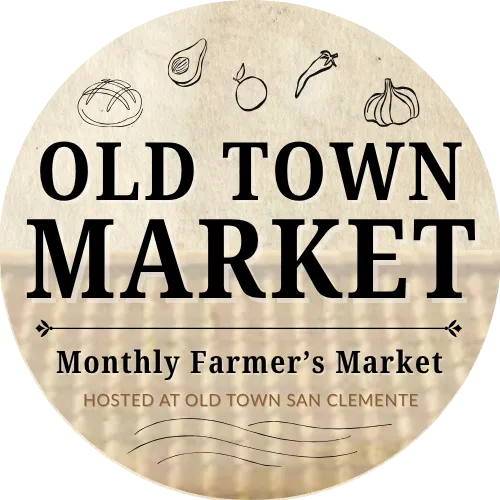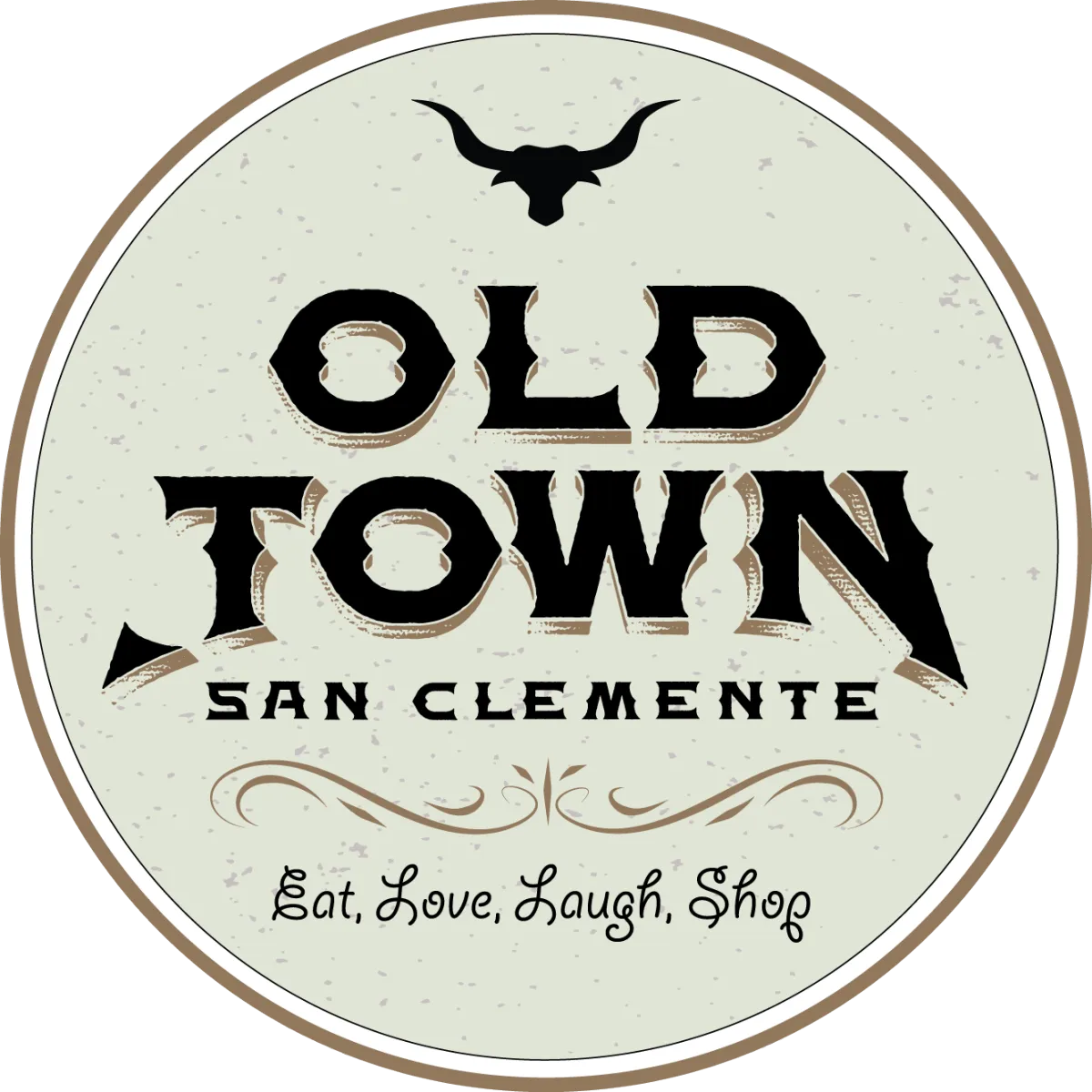Daily Bread Co.
Daily Bread Co. – Because fresh Sourdough bread should be daily
Daily Bread Co.
Daily Bread Co. – Because fresh Sourdough bread should be daily
📍 Daily Bread Co.
San Clemente
Bakery In San Clemente – Crafting fresh, artisanal breads inspired by the flavors and spirit of San Clemente’s coast.
We specialize in Sourdough and also have GF (Gluten Free) Options
📍 Daily Bread Co.
San Clemente
Bakery In San Clemente – Crafting fresh, artisanal breads inspired by the flavors and spirit of San Clemente’s coast.
We specialize in Sourdough and also have GF (Gluten Free) Options
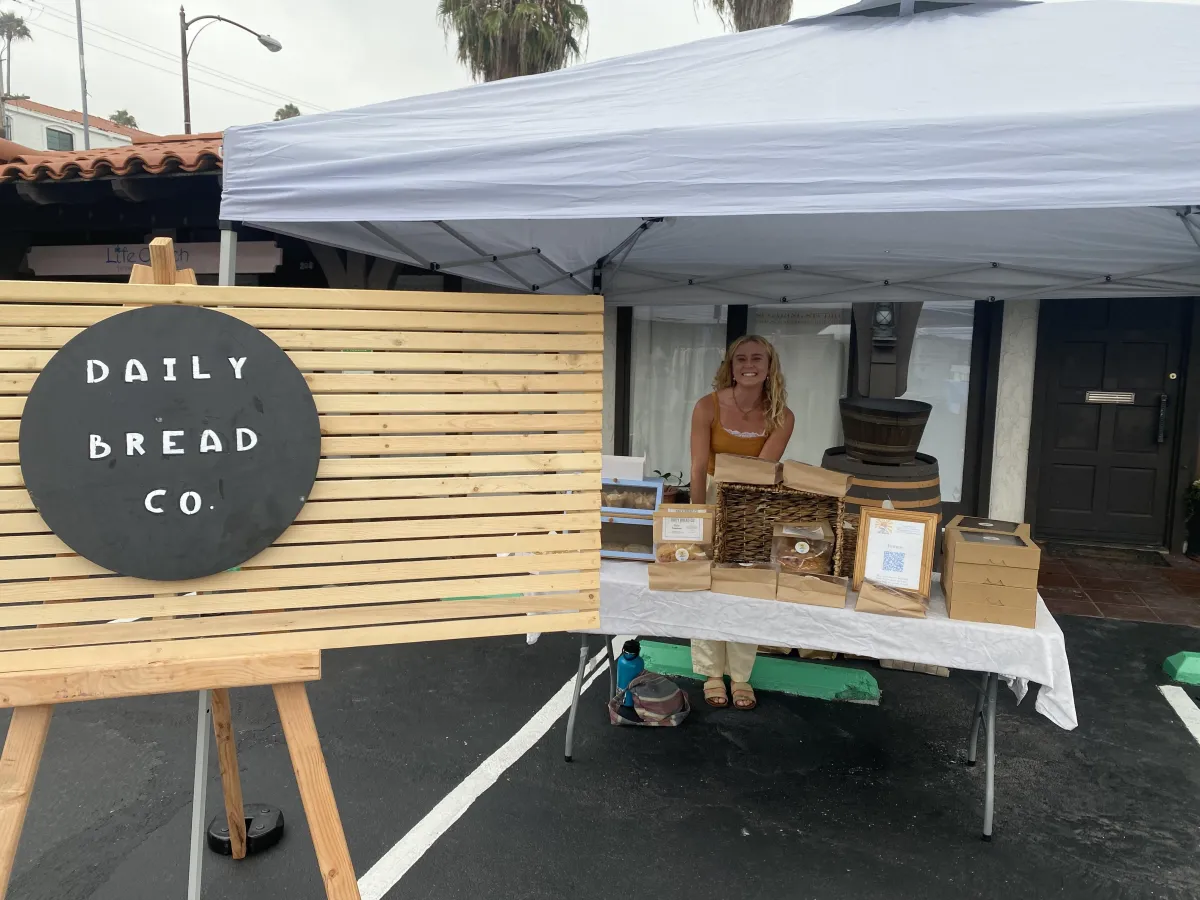
Welcome to the Daily Bread Co.
Welcome to the Daily Bread Co.
We have all organic long fermented sourdough.
We have Parmesan, garlic, and olive rosemary sourdough breads and more.
We bake: sourdough muffins, pumpkin, almond poppy seed, blueberry, banana, chocolate chip, lemon poppy seed also. So, these are all made with sourdough, which definitely adds an element of deliciousness. And then these are huge sourdough chocolate chip cookies. We also have gluten-free snicker doodles and chocolate chip cookies and gluten-free muffins.
Fresh today is our sourdough bagels. We have everything from plain to cinnamon sugar. We also have Gluten Free Options.
We have all organic long fermented sourdough.
We have Parmesan, garlic, and olive rosemary sourdough breads and more.
We bake: sourdough muffins, pumpkin, almond poppy seed, blueberry, banana, chocolate chip, lemon poppy seed also. So, these are all made with sourdough, which definitely adds an element of deliciousness. And then these are huge sourdough chocolate chip cookies. We also have gluten-free snicker doodles and chocolate chip cookies and gluten-free muffins.
Fresh today is our sourdough bagels. We have everything from plain to cinnamon sugar. We also have Gluten Free Options
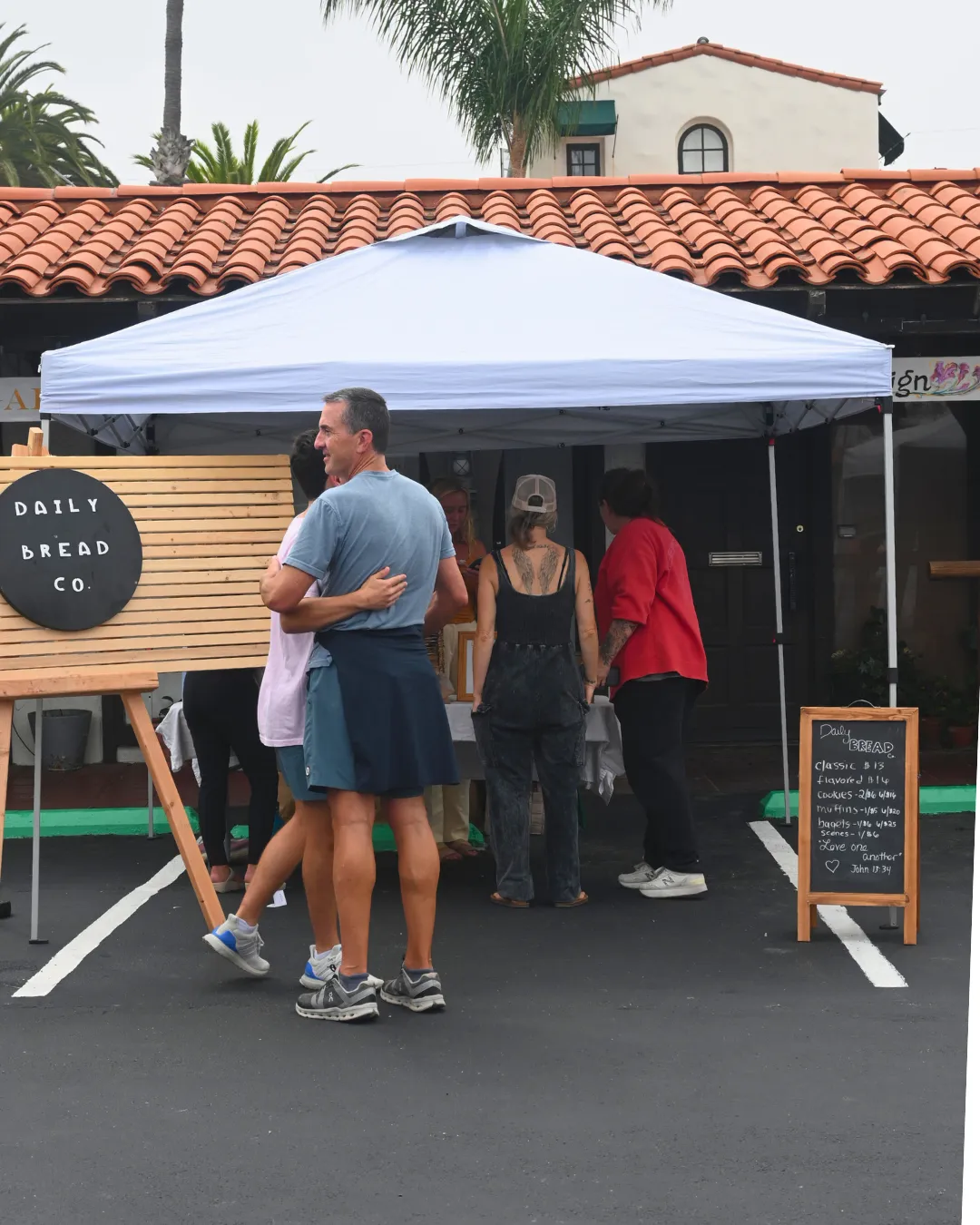
OUR STORY: So, Alex , the owner and people started ordering her sourdough and so it really just kind of was a God thing where it just came up overnight and like grew in such a profound way. Now we're really thrilled to be getting involved in our communities and getting creative with our products like whatever the people want and are interested in we see what we can do and It's been really cool to see it grow.
Market Hours
🗓️ Every Second Saturday of the Month
🕖 10:00 AM to 2:00 PM
OUR STORY: So, Alex , the owner and people started ordering her sourdough and so it really just kind of was a God thing where it just came up overnight and like grew in such a profound way. Now we're really thrilled to be getting involved in our communities and getting creative with our products like whatever the people want and are interested in we see what we can do and It's been really cool to see it grow.
How to Buy and Contact Us when we are not at the Old Town Market
For unique, handcrafted designs, contact Daily Bread Co. at (949)878-0209 or [email protected]
VISIT US AT THE: Old Town Market
🗓️ Every Second Saturday of the Month
🕖 10:00 AM – 2:00 PM
LOCATION: Old Town San Clemente, 111 W. Avenida Palizada, San Clemente, CA 92672
Daily Bread Co. – Sharing the simple joy of fresh,
handcrafted bread every day.
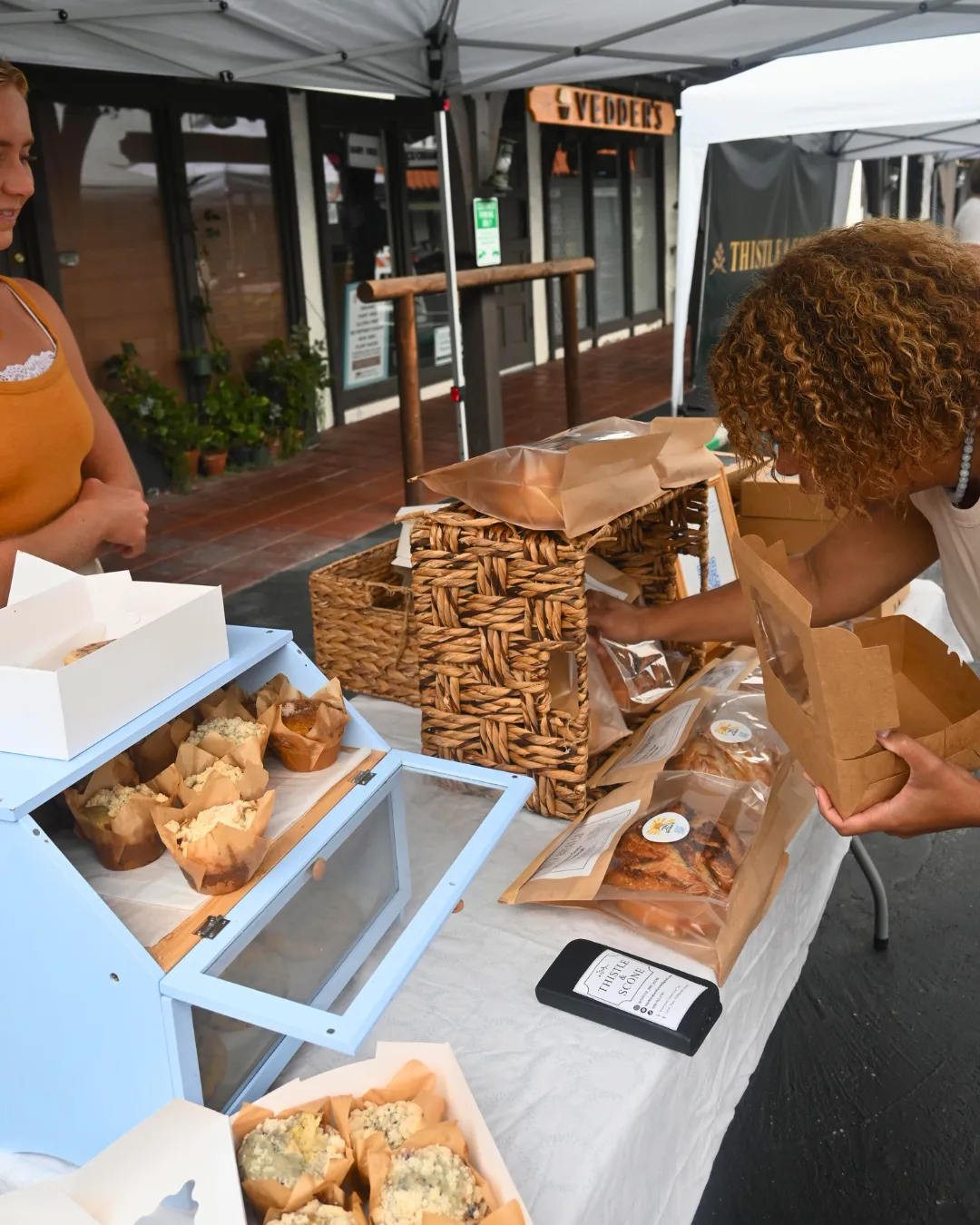
Sourdough is a type of bread that uses the fermentation by naturally occurring yeast and lactobacillus bacteria to raise the dough. In addition to leavening the bread, the fermentation process produces lactic acid, which gives the bread its distinctive sour taste and improves its keeping qualities.
Sourdough is one of the most ancient forms of bread. It was the standard method of breadmaking for most of human history until the Middle Ages, when it was replaced by barm. Barm, in turn, was replaced in the late 19th and early 20th centuries by industrially produced baker's yeast.
The Encyclopedia of Food Microbiology states: "One of the oldest sourdough breads dates from 3700 BCE and was excavated in Switzerland, but the origin of sourdough fermentation likely relates to the origin of agriculture in the Fertile Crescent and Egypt several thousand years earlier", and "Bread production relied on the use of sourdough as a leavening agent for most of human history; the use of baker's yeast as a leavening agent dates back less than 150 years from the year of 2014". Sourdough remained the usual form of leavening down into the European Middle Ages until being replaced by barm from the beer brewing process, and after 1871 by purpose-cultured yeast.
French bakers brought sourdough techniques to Northern California during the California Gold Rush, and it remains a part of the culture of San Francisco today. (The nickname remains in "Sourdough Sam", the mascot of the San Francisco 49ers.) Sourdough has long been associated with the 1849 gold prospectors, though they were more likely to make bread with commercial yeast or baking soda. The "celebrated"[6] San Francisco sourdough is a white bread characterized by a pronounced sourness, and indeed the strain of Lactobacillus in sourdough starters is named Fructilactobacillus sanfranciscensis (previously Lactobacillus sanfranciscensis), alongside the sourdough yeast Kasachstania humilis (previously Candida milleri) found in the same cultures.
The sourdough tradition was carried into the Department of Alaska in the United States and the Yukon Territory in Canada during the Klondike Gold Rush of 1898. Conventional leavenings, such as yeast and baking soda, were much less reliable in the conditions faced by the prospectors. Experienced miners and other settlers frequently carried a pouch of starter either around their neck or on a belt; these were fiercely guarded to keep from freezing. However, freezing does not kill a sourdough starter; excessive heat does. Old hands came to be called "sourdoughs", a term that is still applied to any Alaskan or Klondike old-timer, The significance of the nickname's association with Yukon culture was immortalized in the writings of Robert Service, particularly his collection of "Songs of a Sourdough".
Sourdough baking requires minimal equipment and simple ingredients – flour, salt, and water – but invites practice. Purism is a part of the appeal. As described by one enthusiast[who?], "If you take flour, water, (wild) yeast and salt, and play around with time and temperature, what comes out of the oven is something utterly transformed."
Many bakers feed their starters on elaborate schedules, and many name them. Some approach sourdough as science, attempting to optimize flavor and acidity with careful measurements, experimentation, and correspondence with professional microbiologists. Some lineages of starter are freely shared, and others can be purchased, but many prefer to cultivate their own. Some techniques for doing so are fiercely debated, such as the use of commercial yeast to jump-start a culture while capturing wild yeasts, or adding grapes or milk
Type I sourdough
Traditional sourdoughs used as sole leavening agent are referred to as Type I sourdough; examples include sourdoughs used for San Francisco Sourdough Bread, Panettone, and rye bread. Type I sourdoughs are generally firm doughs, have a pH range of 3.8 to 4.5, and are fermented in a temperature range of 20 to 30 °C (68 to 86 °F). Fructilactobacillus sanfranciscensis was named for its discovery in San Francisco sourdough starters, though it is not endemic to San Francisco. F. sanfranciscensis and Limosilactobacillus pontis often highlight a lactic-acid bacterial flora that includes Limosilactobacillus fermentum, Fructilactobacillus fructivorans, Levilactobacillus brevis, and Companilactobacillus paralimentarius. The yeasts Saccharomyces exiguus, Kasachstania humilis, or Candida holmii usually populate sourdough cultures symbiotically with Fructilactobacillus sanfranciscensis. The yeast S. exiguus is related to the yeasts C. milleri and C. holmii. Torulopsis holmii, Torula holmii, and S. rosei are synonyms used prior to 1978. C. milleri and C. holmii are physiologically similar, but DNA testing established them as distinct. Other yeasts reported found include C. humilis, C. krusei, Pichia anomaola, C. peliculosa, P. membranifaciens, and C. valida. There have been changes in the taxonomy of yeasts in recent decades. F. sanfranciscensis requires maltose, while C. milleri is maltase negative and thus cannot consume maltose. C. milleri can grow under conditions of low pH and relatively high acetate levels, a factor contributing to sourdough flora's stability.
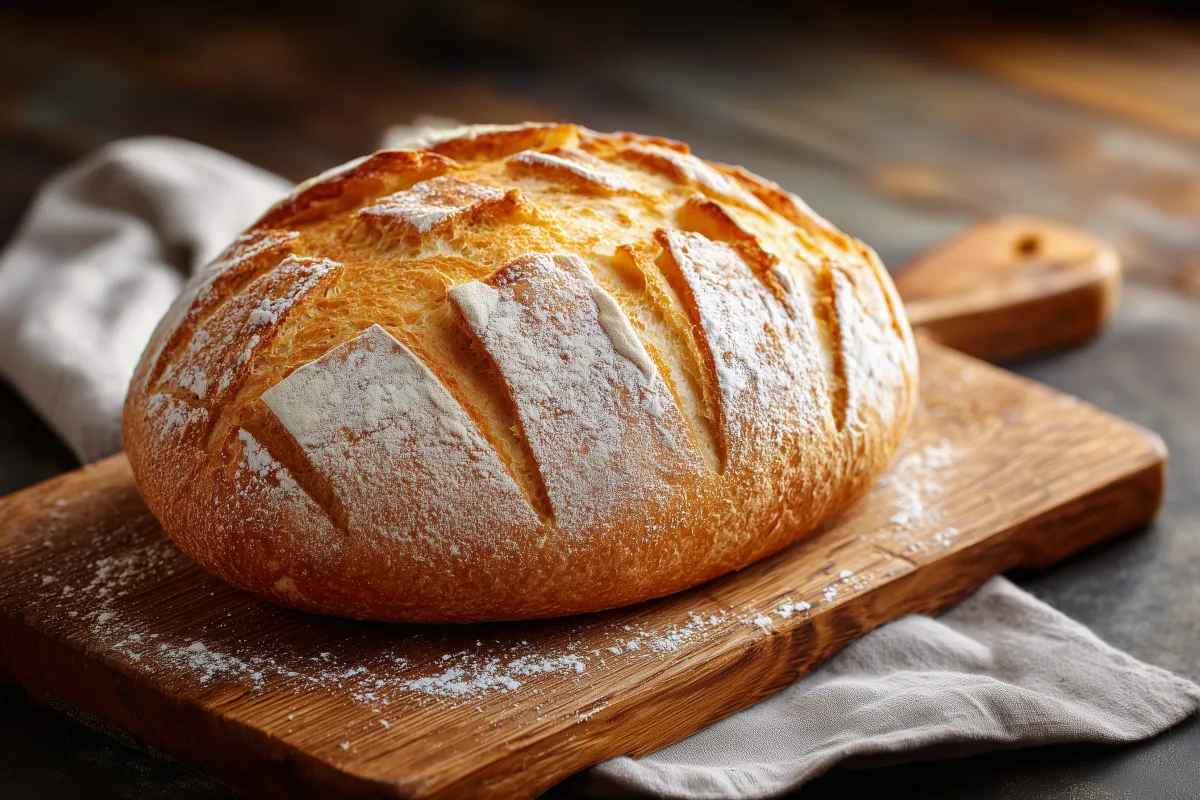
Type II sourdough
In Type II sourdoughs, baker's yeast or Saccharomyces cerevisiae is added to leaven the dough; L. pontis and Limosilactobacillus panis in association with Lactobacillus species are dominant members of type II sourdoughs. They have a pH less than 3.5, and are fermented within a temperature range of 30 to 50 °C (86 to 122 °F) for several days without feedings, which reduces the flora's activity. This process was adopted by some in industry, in part, due to simplification of the multiple-step build typical of Type I sourdoughs.In Type II sourdoughs, yeast growth is slowed or stopped due to higher fermentation temperatures. These doughs are more liquid and once fermented may be chilled and stored for up to a week. They are pumpable and used in continuous bread production systems.ow pH and relatively high acetate levels, a factor contributing to sourdough flora's stability.
Type III sourdough
Type III sourdoughs are Type II sourdoughs subjected to a drying process, usually either spray or drum drying, and are mainly used at an industrial level as flavoring agents. They are dominated by "drying-resistant [lactic acid bacteria] such as Pediococcus pentosaceus, L. plantarum, and L. brevis." The drying conditions, time and heat applied, may be varied in order to influence caramelization and produce desired characteristics in the baked product.
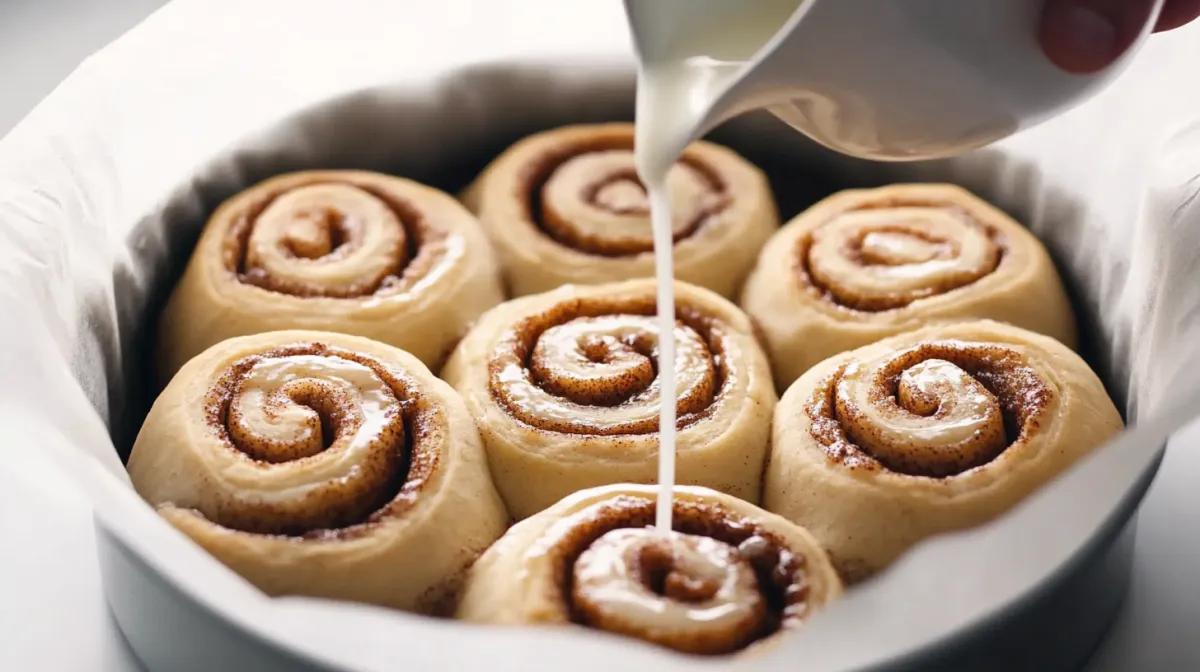
A cinnamon roll (also known as cinnamon bun, cinnamon swirl, cinnamon scroll, cinnamon Danish and cinnamon snail) is a sweet roll commonly served in Northern Europe and North America. There are alternative recipes that use Puff pastry instead of yeasted dough, but are constructed using a similar method.
A cinnamon roll consists of a rolled sheet of yeast-leavened sweet bread dough or Viennoiserie, onto which a cinnamon and sugar mixture (with some variations including brown sugar, raisins or other ingredients) is sprinkled over a thin coat of butter. The dough is then rolled, cut into individual portions and normally baked, however a deep fried version is called cinnamon roll or cinnamon bun doughnut.
Origins
Arab spice traders introduced the Sri Lankan cinnamon spice to Europe. The origin of cinnamon rolls is unknown, but might be in Byzantium. The oldest recorded recipes for cinnamon rolls are from Germany in the 16th century. Cinnamon rolls spread from Germany to Scandinavia, introduced to Norway from Hanseatic traders through the port city of Bergen where it would become known as the skillingsbolle (lit. ''shilling bun''), with the modern Swedish kanelbulle (lit. ''cinnamon bun'') being created after the first world war. They spread to the United States with German immigrants
Size
The size of a cinnamon roll varies from place to place, but many vendors supply a smaller size about 5 centimeters (2.0 in) in diameter and a larger size about 10 cm (3.9 in) to a side. One of the larger varieties can be found in Finland, called korvapuusti (lit. 'a 'cuff on the ear'', fig. "pulling someone's ear for disciplining"), where it can be up to 20 cm (7.9 in) in diameter and weigh up to 200 g (7.1 oz).
Haga, a district in Gothenburg, Sweden, has very large cinnamon rolls. These cinnamon rolls are called hagabullar or Queen of the Kitchen. Hagabullar are usually 30 centimeters (12 in) or more in diameter and are, despite their size, not considered a communal roll.
American cinnamon rolls are frequently large, baked in a pan and topped with cream cheese icing (usually confectioners' sugar-based) and are sometimes fried, finished with glaze, and served as a variation of a raised donut. There are also regional combinations: in the American Midwest, especially Nebraska and Kansas, cinnamon rolls are commonly eaten with chili. There are also regions that include bacon pieces.
Cinnamon roll traditions
In Sweden and Finland, cinnamon rolls are traditionally enjoyed during a get-together, including the consumption of coffee and or baked goods. In Sweden, the get-together is known as a fika, typically held in the afternoon, by coworkers during a break, by friends or by family. National Cinnamon Roll Day (Kanelbullens dag) is observed on October 4 in Sweden and Finland.
In Denmark, cinnamon buns are especially popular on Wednesdays, where an extra large variant called the Wednesday snail is sold. This tradition was specially invented during the 1990s[34] where the national football team usually played their games on Wednesdays.
Along with Topfengolatsche, Buttercroissant and Faschingskrapfen, cinnamon rolls are a typical baked good to have with afternoon coffee, known as "Kaffe und Kuchen" in Austria and Germany.
In North America, it is commonly eaten for breakfast or dessert. When eaten for breakfast in the U.S., it may be served with cream cheese frosting.
Cinnamon buns are particularly popular during the Christmas season in both Slovakia and the Czech Republic. They form part of the traditional Christmas baking repertoire in many households, alongside other festive treats like vanilla crescents (vanilkové rožteky) and linzer cookies.
A cookie is a sweet biscuit with high sugar and fat content. Cookie dough is softer than that used for other types of biscuit, and they are cooked longer at lower temperatures. The dough typically contains flour, sugar, egg, and some type of oil or fat. It may include other ingredients such as raisins, oats, chocolate chips, or nuts. Cookie texture varies from crisp and crunchy to soft and chewy, depending on the exact combination of ingredients and methods used to create them.
People in the United States and Canada typically refer to all sweet biscuits as "cookies". People in most other English-speaking countries call crunchy cookies "biscuits" but may use the term "cookies" for chewier biscuits and for certain types, such as chocolate-chip cookies.
Cookies are often served with beverages such as milk, coffee, or tea and sometimes dunked, which releases more flavour by dissolving the sugars, while also softening their texture. Factory-made cookies are sold in grocery stores, convenience stores, and vending machines. Fresh-baked cookies are sold at bakeries and coffeehouses.
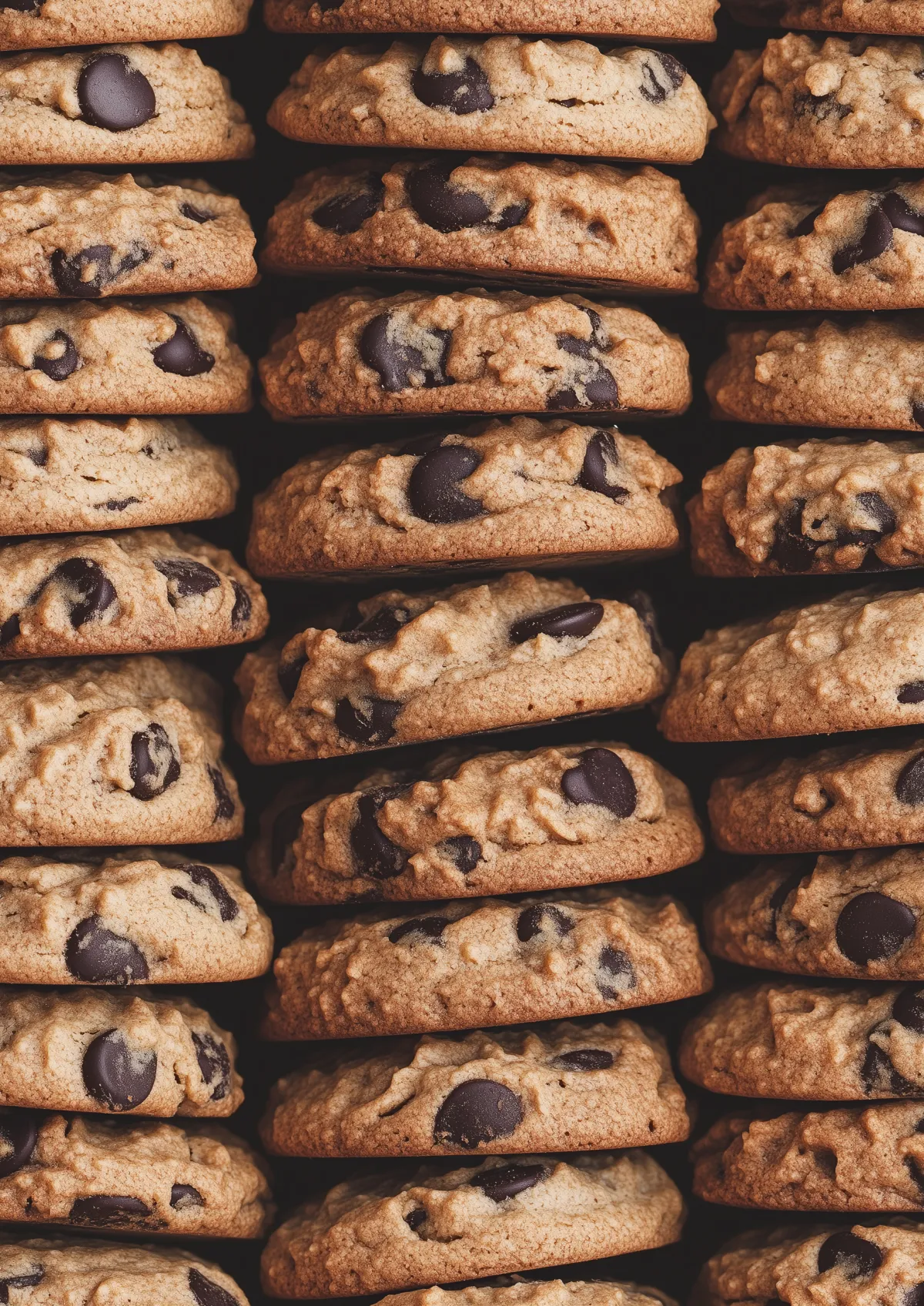
A chocolate chip cookie is a drop cookie that features chocolate chips or chocolate morsels as its distinguishing ingredient. Chocolate chip cookies are claimed to have originated in the United States in 1938, when Ruth Graves Wakefield chopped up a Nestlé semi-sweet chocolate bar and added the chopped chocolate to a cookie recipe; however, historical recipes for grated or chopped chocolate cookies exist prior to 1938 by various other authors.
Generally, the recipe starts with a dough composed of flour, butter, both brown and white sugar, semi-sweet chocolate chips, eggs, and vanilla. Variations on the recipe may add other types of chocolate, as well as additional ingredients such as nuts or oatmeal. There are also vegan versions with the necessary ingredient substitutions, such as vegan chocolate chips, vegan margarine, and egg substitutes. A chocolate chocolate chip cookie uses a dough flavored with chocolate or cocoa powder, before chocolate chips are mixed in. These variations of the recipe are also referred to as "double" or "triple" chocolate chip cookies, depending on the combination of dough and chocolate types.
Common variations
The M&M party cookie is baked with M&M's instead of chocolate chips.. The chocolate chocolate chip or double chocolate cookie uses a dough that is chocolate-flavored by the addition of cocoa or melted chocolate. Variations on this cookie include replacing chocolate chips with white chocolate or peanut butter chips. The macadamia chip cookie has macadamia nuts and white chocolate chips.
The chocolate chip peanut butter cookie replaces the vanilla-flavored dough with a peanut butter-flavored one. Chocolate chip cookie dough baked in a baking dish instead of a cookie sheet results in a chocolate chip bar cookie, also known as congo bars or blondies.Other variations include different sizes and shapes of chocolate chips, as well as dark or milk chocolate chips. These changes lead to differences in both flavor and texture.
A snickerdoodle is a type of cookie made with flour, fat, sugar, and salt, and rolled in cinnamon sugar. Eggs may also sometimes be used as an ingredient, with cream of tartar and baking soda added to leaven the dough. Snickerdoodles are characterized by a cracked surface and can be either crisp or soft depending on the ingredients used.
Snickerdoodles are often referred to as "sugar cookies". However, traditional sugar cookies are often rolled in white sugar whereas snickerdoodles are rolled in a mixture of white sugar and cinnamon. Cream of tartar is added for its signature texture as another main difference.
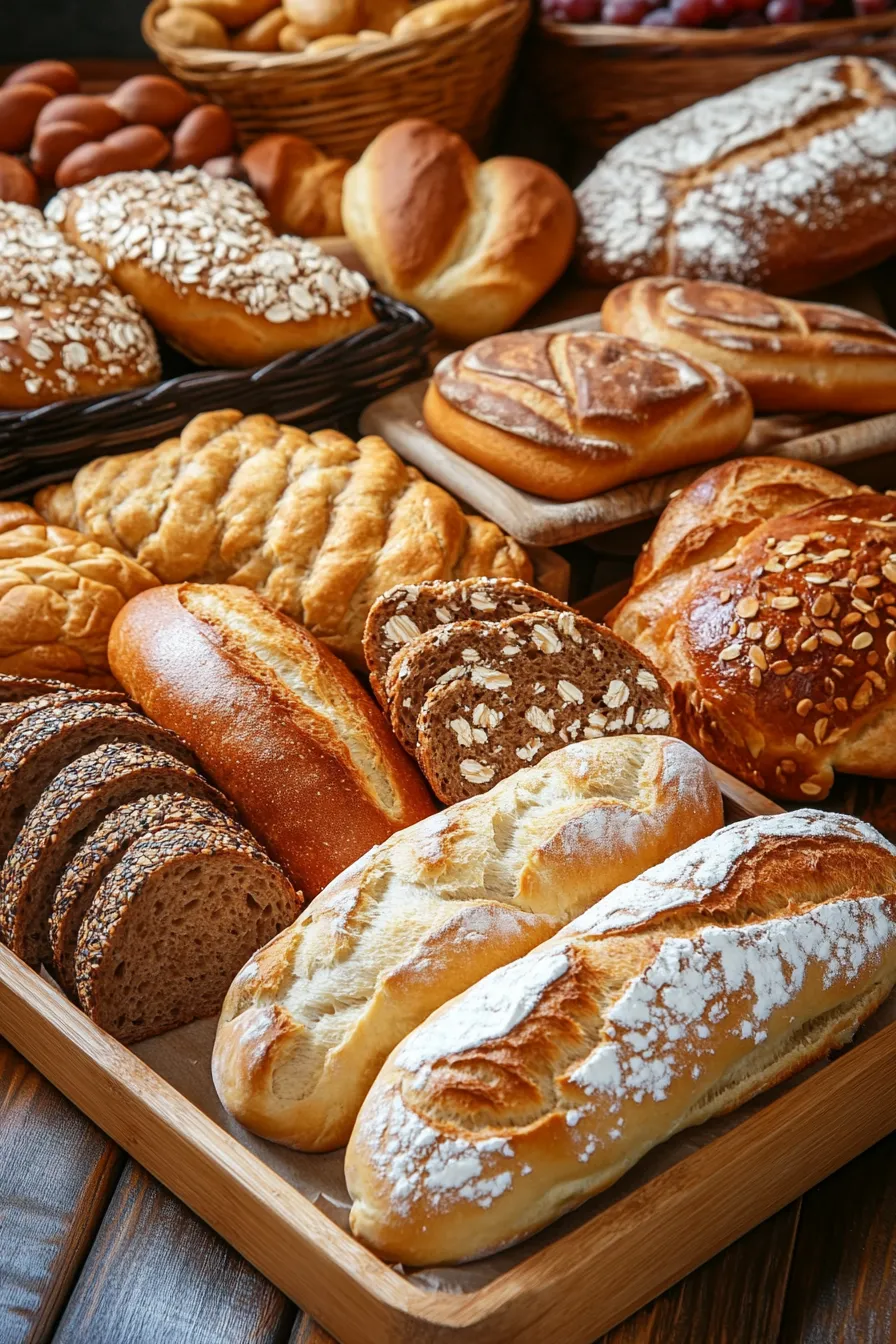
A muffin or bun is an individually portioned baked product; however, the term can refer to one of two distinct items: a part-raised flatbread (like a crumpet) that is baked and then cooked on a griddle (typically unsweetened), or a (often sweetened) quickbread that is chemically leavened and then baked in a mold. While quickbread "American" muffins are often sweetened, there are savory varieties made with ingredients such as corn and cheese, and less sweet varieties like traditional bran muffins. The flatbread "English" variety is of British or other European derivation, and dates from at least the early 18th century, while the quickbread originated in North America during the 19th century. Both types are common worldwide today.
One 19th century source suggests that muffin may be related to the Greek bread maphula, a 'cake baked on a hearth or griddle', or from Old French mou-pain 'soft bread', which may have been altered into mouffin. The word is first found in print in 1703, spelled moofin; it is of uncertain origin but possibly derived from the Low German Muffen, the plural of Muffe, meaning 'small cake', or possibly with some connection to the Old French moufflet meaning 'soft', as said of bread. The expression muffin-man, meaning a street seller of muffins, is attested in a 1754 poem, which includes the line: "Hark! the shrill Muffin-Man his Carol plies.s are sold at bakeries and coffeehouses.
Quickbread muffins (sometimes described in Britain as "American muffins") are baked, individual-sized, cupcake-shaped foods with a "moist, coarse-grained" texture. Muffins are available in both savoury varieties, such as cornmeal and cheese muffins, or sweet varieties such as blueberry, chocolate chip, lemon or banana flavours. Sweetened muffins range from lightly sweetened muffins to products that are "richer than many cakes in fat and sugar." They are similar to cupcakes in size and cooking methods, the main difference being that cupcakes tend to be sweet desserts using cake batter and which are often topped with sugar icing (American frosting). Muffins may have solid items mixed into the batter, such as berries, chocolate chips or nuts. Fresh baked muffins are sold by bakeries, donut shops and some fast food restaurants and coffeehouses. Factory baked muffins are sold at grocery stores and convenience stores and are also served in some coffeeshops and cafeterias
A croissant is a French Viennoiserie in a crescent shape made from a laminated yeast dough that sits between a bread and a puff pastry.
It is a buttery, flaky, Viennoiserie inspired by the shape of the Austrian kipferl, but using the French yeast-leavened laminated dough. Croissants are named for their historical crescent shape. The dough is layered with butter, rolled and folded several times in succession, then rolled into a thin sheet, in a technique called laminating. The process results in a layered, flaky texture, similar to a puff pastry.
Crescent-shaped breads have been made since the Renaissance, and crescent-shaped cakes possibly since antiquity. The modern croissant was developed in the early 20th century, when French bakers replaced the brioche dough of the kipferl with a yeast-leavened laminated dough.
In the late 1970s, the development of factory-made, frozen, preformed but unbaked dough made them into a fast food that could be freshly baked by unskilled labor. The croissant bakery, notably the La Croissanterie chain, was a French response to American-style fast food, and as of 2008, 30–40% of the croissants sold in French bakeries and patisseries were baked from frozen dough.
Croissants are a common part of a continental breakfast in many European countries.
A gluten-free diet is a diet that strictly excludes gluten, proteins present in wheat (and all wheat varieties such as spelt and kamut), barley, rye, oat, and derivatives of these grains such as malt and triticale, and foods that may include them, or shared transportation or processing facilities with them. The inclusion of oats in a gluten-free diet remains controversial. Oat toxicity in people with gluten-related disorders depends on the oat cultivar consumed because the immunoreactivities of toxic prolamins are different among oat varieties. Furthermore, oats are frequently cross-contaminated with the other gluten-containing cereals. Pure oat (labelled as "pure oat" or "gluten-free oat") refers to oats uncontaminated with any of the other gluten-containing cereals. Some cultivars of pure oat could be a safe part of a gluten-free diet, requiring knowledge of the oat variety used in food products for a gluten-free diet. Nevertheless, the long-term effects of pure oats consumption are still unclear and further studies identifying the cultivars used are needed before making final recommendations on their inclusion in the gluten-free diet.
Other grains, although gluten-free in themselves, may contain gluten by cross-contamination with gluten-containing cereals during grain harvesting, transporting, milling, storing, processing, handling or cooking.Processed foods commonly contain gluten as an additive (as emulsifiers, thickeners, gelling agents, fillers, and coatings), so they would need specific labeling. Unexpected sources of gluten are, among others, processed meat, vegetarian meat substitutes, reconstituted seafood, stuffings, butter, seasonings, marinades, dressings, confectionary, candies, and ice cream.
Gluten-free food
The gluten-free diet includes naturally gluten-free food, such as meat, fish, seafood, eggs, milk and dairy products, nuts, legumes, fruit, vegetables, potatoes, pseudocereals (in particular amaranth, buckwheat, chia seed, quinoa), only certain cereal grains (corn, rice, sorghum), minor cereals (including fonio, Job's tears, millet, teff, called "minor" cereals as they are "less common and are only grown in a few small regions of the world"), some other plant products (arrowroot, mesquite flour,[88] sago, tapioca) and products made from these gluten-free foods. Many Indian cuisine options, particularly South Indian cuisine, are gluten-free.
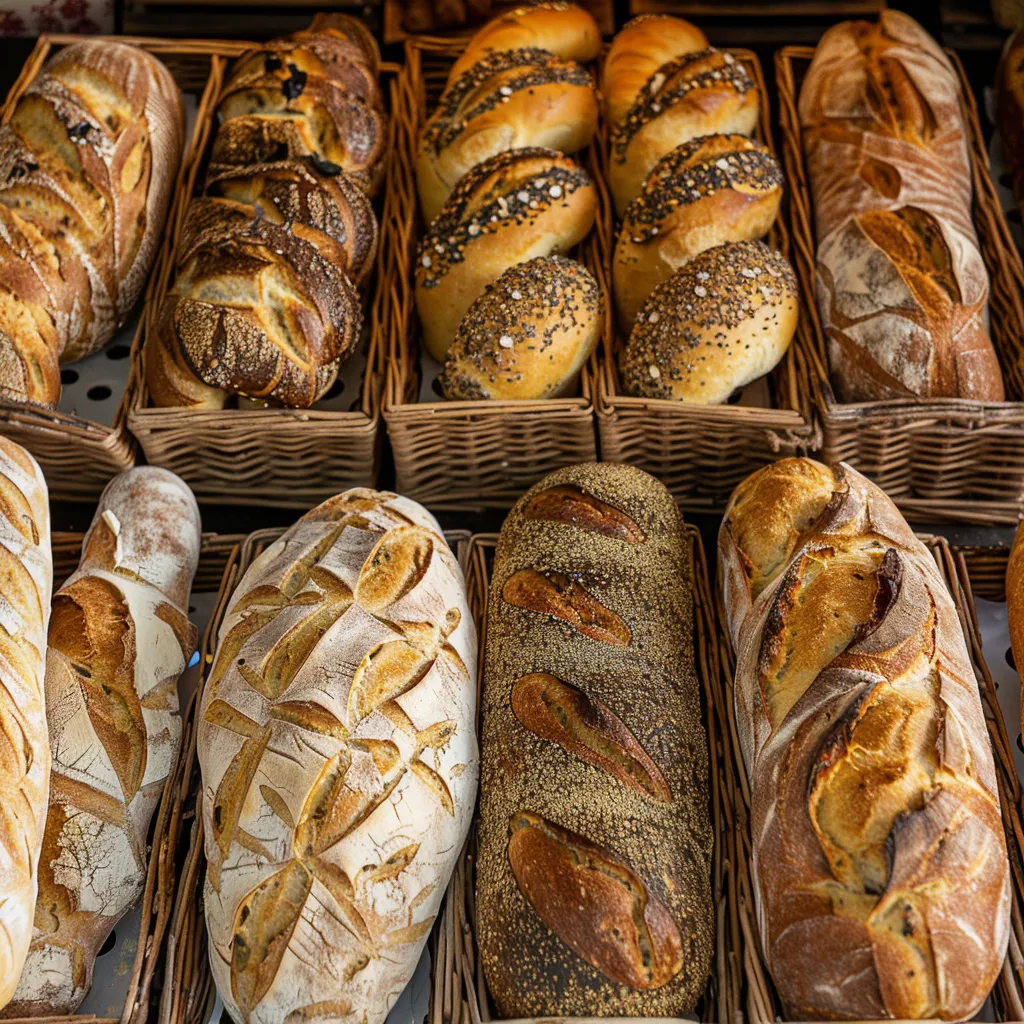
A bakery is an establishment that produces and sells flour-based baked goods made in an oven such as bread, cookies, cakes, doughnuts, bagels, pastries, and pies. Some retail bakeries are also categorized as cafés, serving coffee and tea to customers who wish to consume the baked goods on the premises. In some countries, a distinction is made between bakeries, which primarily sell breads, and pâtisseries, which primarily sell sweet baked goods.
Baked goods have been around for thousands of years. The art of baking was very popular during the Roman Empire. It was highly famous art as Roman citizens loved baked goods and demanded them frequently for important occasions such as feasts and weddings. Because of the fame of the art of baking, around 300 BC, baking was introduced as an occupation and respectable profession for Romans. Bakers began to prepare bread at home in an oven, using grist mills to grind grain into flour for their breads. The demand for baked goods persisted, and the first bakers' guild was established in 168 BC in Rome. The desire for baked goods promoted baking throughout Europe and expanded into eastern parts of Asia. Bakers started baking bread and other goods at home and selling them on the streets.
This trend became common, and soon, baked products were sold in streets of Rome, Germany, London, and more. A system of delivering baked goods to households arose as the demand increased significantly. This prompted bakers to establish places where people could purchase baked goods. The first open-air market for baked goods was established in Paris, and since then bakeries have become a common place to purchase delicious goods and to socialize. On July 7, 1928, a bakery in Chillicothe, Missouri introduced sliced bread using the automatic bread-slicing machine, invented by Otto Frederick Rohwedder. While the bread initially failed to sell, due to its "sloppy" aesthetic, and the fact it went stale faster, it later became popular. In World War II bread slicing machines were effectively banned, as the metal in them was required for wartime use. When they were requisitioned, creating 100 tons of metal alloy, the decision proved very unpopular with housewives.
Some bakeries provide services for special occasions (such as weddings, anniversaries, birthday parties, business networking events, etc.) or customized baked products for people who have allergies or sensitivities to certain foods (such as nuts, peanuts, dairy or gluten, etc.). Bakeries can provide a wide range of cake designs such as sheet cakes, layer cakes, wedding cakes, tiered cakes, etc. Other bakeries may specialize in traditional or hand-made types of baked products made with locally milled flour, without flour bleaching agents or flour treatment agents, baking what is sometimes referred to as artisan bread.
Commercialization
In many countries, many grocery stores and supermarkets sell "sliced bread" (prepackaged/presliced bread), cakes, and other pastries. They may also offer in-store baking, with products either fully baked on site or part-baked prior to delivery to store, and some offer cake decoration. Nonetheless, many people still prefer to get their baked goods from a small artisanal bakery, either out of tradition, the availability of a greater variety of baked products, or due to the higher quality products characteristic of the trade of baking.
Bread
Bread roll
Flatbreads
Bagels
Donuts
Muffins
Pizzas
Buns
Pastries
Pasties
Sausage rolls
Pies
Crumpets
Tarts
Brownies
Cakes
Croissants
Cupcakes
Cookies
Scones
Barmbrack
Soda bread
Biscuit (bread)
Crackers
Biscuits
Pretzels
Biscotti
Kalakukko
Cornbread
Pandesal
Pumpkin bread
Pita
Sourdo
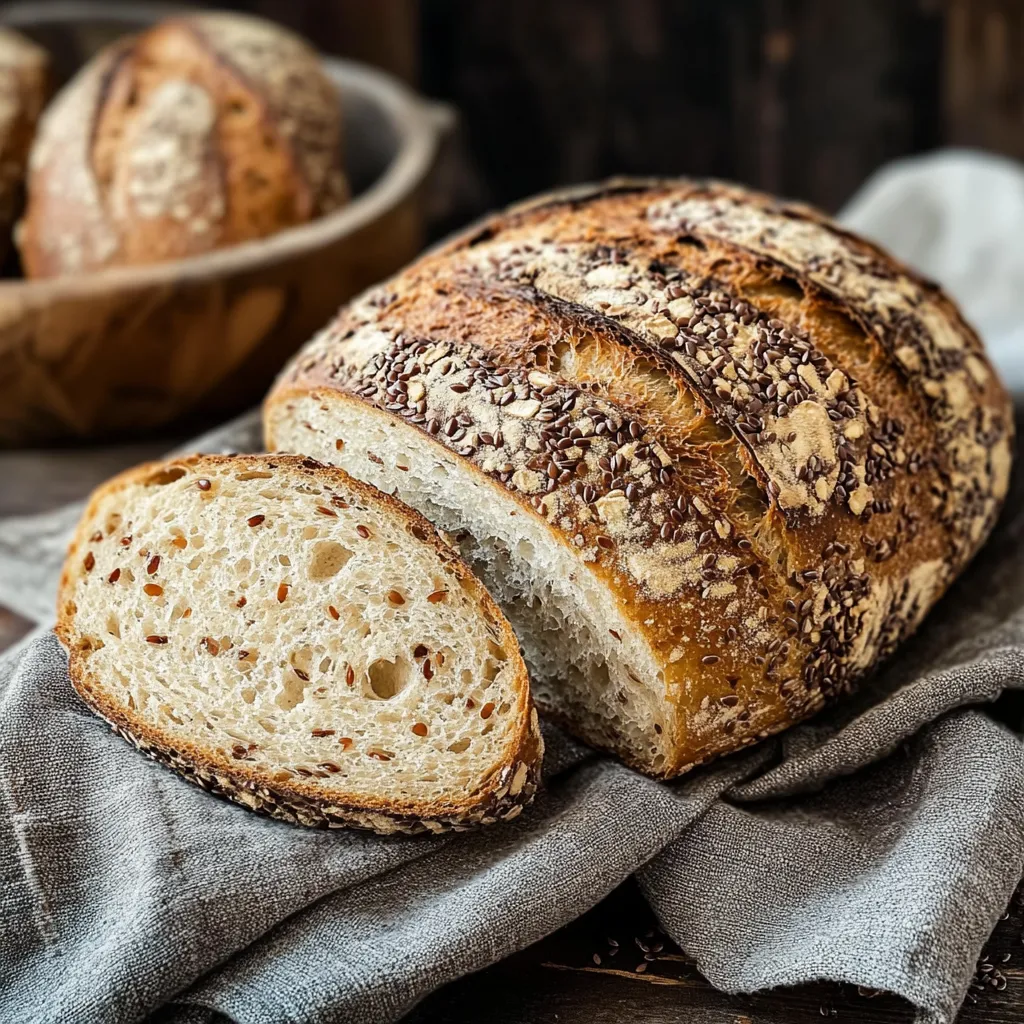
Bread is a baked food product made from water, flour, and often yeast. It is a staple food across the world, particularly in Europe and the Middle East. Throughout recorded history and around the world, it has been an important part of many cultures' diets. It is one of the oldest human-made foods, having been of significance since the dawn of agriculture, and plays an essential role in both religious rituals and secular culture.
Bread may be leavened by naturally occurring microbes (e.g. sourdough), chemicals (e.g. baking soda), industrially produced yeast, or high-pressure aeration, which creates the gas bubbles that fluff up bread. Bread may also be unleavened. In many countries, mass-produced bread often contains additives to improve flavor, texture, color, shelf life, nutrition, and ease of production.
The Old English word for bread was hlaf (hlaifs in Gothic: modern English loaf) which appears to be the oldest Teutonic name. Old High German hleib and modern German Laib derive from this Proto-Germanic word, which was borrowed into some Slavic (Czech: chléb, Polish: bochen chleba, Russian: khleb) and Finnic (Finnish: leipä, Estonian: leib) languages as well.
The Middle and Modern English word bread appears in other Germanic languages, such as West Frisian: brea, Dutch: brood, German: Brot, Swedish: bröd, and Norwegian and Danish: brød; it may be related to brew or perhaps to break, originally meaning "broken piece", "morsel"
Bread is one of the oldest prepared foods.[citation needed] Evidence from 30,000 years ago in Europe and Australia revealed starch residue on rocks used for pounding plants. It is possible that during this time, starch extract from the roots of plants, such as cattails and ferns, was spread on a flat rock, placed over a fire and cooked into a primitive form of flatbread. The oldest evidence of bread-making has been found in a 14,500-year-old Natufian site in Jordan's northeastern desert. Around 10,000 BC, with the dawn of the Neolithic age and the spread of agriculture, grains became the mainstay of making bread. Yeast spores are ubiquitous, including on the surface of cereal grains, so any dough left to rest leavens naturally.
Woman baking bread (c. 2200 BC); Louvre
An early leavened bread was baked as early as 6000 BC in southern Mesopotamia, cradle of the Sumerian civilization, who may have passed on the knowledge to the Egyptians around 3000 BC. The Egyptians refined the process and started adding yeast to the flour. The Sumerians were already using ash to supplement the dough as it was baked.
There were multiple sources of leavening available for early bread. Airborne yeasts could be harnessed by leaving uncooked dough exposed to air for some time before cooking. Pliny the Elder reported that the Gauls and Iberians used the foam skimmed from beer, called barm, to produce "a lighter kind of bread than other peoples" such as barm cake. Parts of the ancient world that drank wine instead of beer used a paste composed of grape juice and flour that was allowed to begin fermenting, or wheat bran steeped in wine, as a source for yeast. The most common source of leavening was to retain a piece of dough from the previous day to use as a form of sourdough starter, as Pliny also reported.
The ancient Egyptians, Greeks, and Romans all considered the degree of refinement in the bakery arts as a sign of civilization.
The Chorleywood bread process was developed in 1961; it uses the intense mechanical working of dough to dramatically reduce the fermentation period and the time taken to produce a loaf. The process, whose high-energy mixing allows for the use of grain with a lower protein content, is now widely used around the world in large factories. As a result, bread can be produced very quickly and at low costs to the manufacturer and the consumer. However, there has been some criticism of the effect on nutritional value.
Types
Ruisreikäleipä, a flat rye flour loaf with a hole
Bread is the staple food of the Middle East, Central Asia, North Africa, Europe, and in European-derived cultures such as those in the Americas, Australia, and Southern Africa. This is in contrast to parts of South and East Asia, where rice or noodles are the staple. Bread is usually made from a wheat-flour dough that is cultured with yeast, allowed to rise, and baked in an oven. Carbon dioxide and ethanol vapors produced during yeast fermentation result in bread's air pockets. Owing to its high levels of gluten (which give the dough sponginess and elasticity), common or bread wheat is the most common grain used for the preparation of bread, which makes the largest single contribution to the world's food supply of any food.
Bread is also made from the flour of other wheat species (including spelt, emmer, einkorn and kamut).[19] Non-wheat cereals including rye, barley, maize (corn), oats, sorghum, millet and rice have been used to make bread, but, with the exception of rye, usually in combination with wheat flour as they have less gluten.
Gluten-free breads are made using flours from a variety of ingredients such as almonds, rice, sorghum, corn, legumes such as beans, and tubers such as cassava. Since these foods lack gluten, dough made from them may not hold its shape as the loaves rise, and their crumb may be dense with little aeration. Additives such as xanthan gum, guar gum, hydroxypropyl methylcellulose (HPMC), corn starch, or eggs are used to compensate for the lack of gluten.
Cultural significance
A Ukrainian woman in national dress welcoming with bread and salt
Bread has a significance beyond mere nutrition in many cultures because of its history and contemporary importance. Bread is also significant in Christianity as one of the elements (alongside wine) of the Eucharist, and in other religions including Paganism. In many cultures, bread is a metaphor for basic necessities and living conditions in general. For example, a "bread-winner" is a household's main economic contributor and has little to do with actual bread-provision. This is also seen in the phrase "putting bread on the table". The Roman poet Juvenal satirized superficial politicians and the public as caring only for "panem et circenses" (bread and circuses). In Russia in 1917, the Bolsheviks promised "peace, land, and bread."
Old Town San Clemente Market
Local. Handmade. Heartfelt. Join us for a community-driven farmer's market in the heart of San Clemente.
